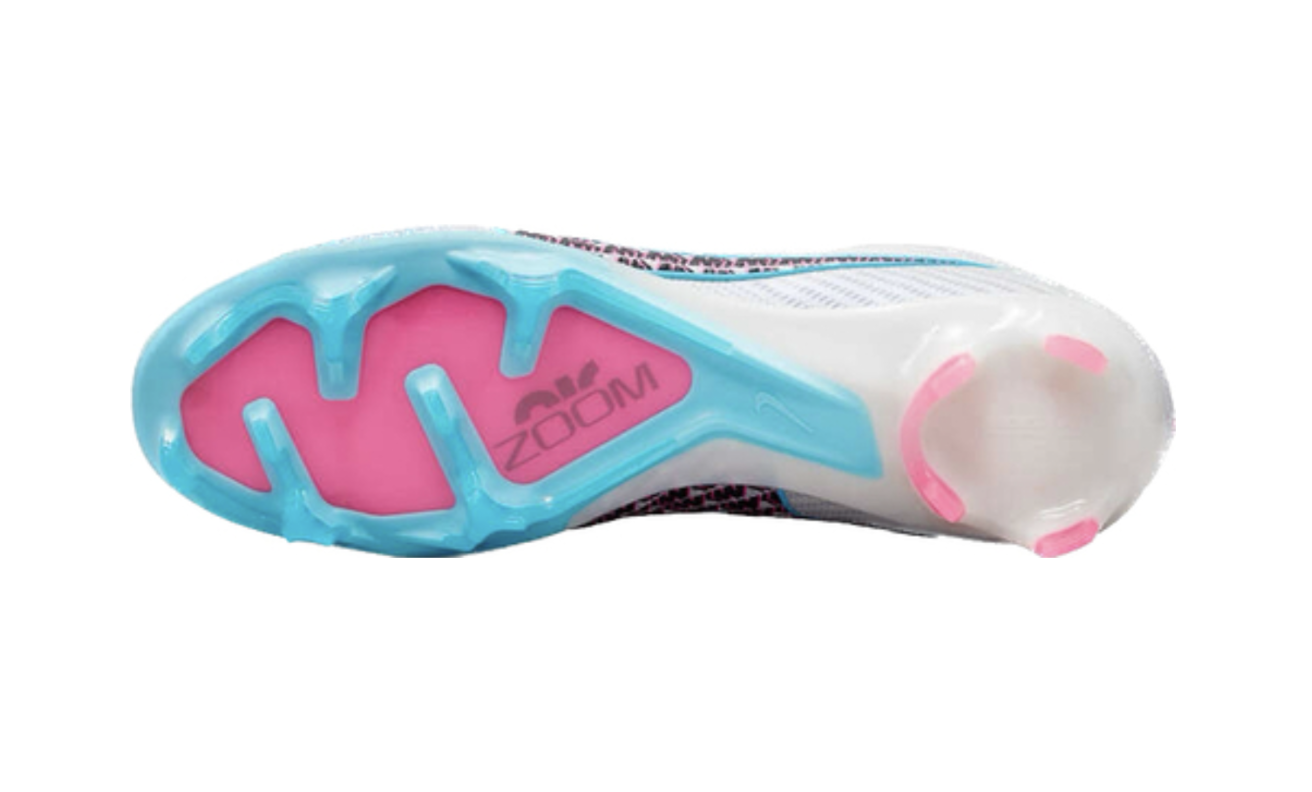Football Boot Guide
Find the right boots for you
Football boots can play a pivotal role in allowing your body to perform at its best. Selecting the right boots can help with a players agility, speed and assist in the prevention of injury.
So how do you know which boot is the most suitable for you or your child?
When selecting the right footy boots for your foot and sport the 5 key features that you should consider are Surface, Grip, Material, Weight & Fit.
1. SURFACE
Different surfaces can affect your traction and control. For natural grass grounds there are 2 types of boots: Firm Ground (FG) or Soft Ground (SG) football boots.
Firm Ground: These types of boots are designed to provide traction and stability on most natural grass fields. As most grounds in Australia are harder than conditions elsewhere in the world, 95% of football boots sold in Australia feature moulded studs that are either a blade or round shape.
Soft Ground: Used on wet or muddy surfaces these boots have longer screw in studs on the sole to provide extra stability on softer grounds or for use by Rugby Union players.
2. GRIP
The number of studs and their configuration on the sole of the boot is important for grip and control.
As Australian grounds are generally firmer, more studs can help distribute the load across the whole foot.
Smaller round studs will grip and release well in the forefoot, while larger studs or cleats are used in the heel to provide more grip and stability.
3. MATERIAL
Leather: are flexible and breathable and can provide a molded fit and more sensitive feel of the ball on your foot. A leather boot can absorb more moisture during wet conditions, making it heavier.
Synthetic: is water repellant making it lighter in wet conditions and can dry out quicker than natural leathers.
Knitted: Some elite new generation boots use a knitted microfibre which allows for greater freedom of movement and improved comfort.
4. WEIGHT
To get the best fitting and functional boot for yourself, you need to consider your specific sport, position, age and injury history. Choosing boots based on their weight or profile can help reduce injury and improve performance.
Lightweight football boots are designed for those players requiring speed and agility. These boots have a ‘zero drop’ meaning they have a flat sole and have less support to reduce weight and improve proprioception or feel of the ball. However, transitioning from running shoes with a greater heel height to lightweight boots can place greater stress on the heel and achilles.
Supportive boots have a similar profile to running shoes with a 10mm heel height and a cushioned midsole. These boots are designed for players that need extra stability and cushioning.
5. FIT
The most important factor when purchasing football boots is to make sure that it fits your foot properly. Many boots available in Australia are designed for the international market, which are generally tight with a low profile. More suited to soccer players looking for more ‘feel’ on the ball.
Make sure that your toes have enough width and wiggle room to allow for toe splay and the boot fits your midfoot and heel securely to avoid slippage.
Remember to take your football socks when purchasing boots as they are often thicker than normal socks.
Podiatrist Recommendations
To prevent injury it is advisable to alternate your footwear. During pre-season or dry conditions it is recommended to use your runners for medium to long distance running drills for more soft-cushioned support and transfer to your footy boots for faster, ball based drills where more speed and traction is required.
Another option is to wear a more supportive football boot for training and then transfer to your lightweight boot for games or faster paced training sessions.
Asics lead the way when it comes to providing football boots with added support, width and cushioning.
Active Health Podiatrists & Physiotherapists can match particular features in football boots that suit your foot type or specific injury. For instance, if you are prone to achilles injury or heel pain you may benefit from a pair of football boots that has a 10mm heel gradient. This type of boot can help reduce forces going through the Achilles and reduce pain/symptoms.
For those that prefer to wear lightweight boots but need more support, our team of Therapists at Active Health can also place a slim/low profile orthotic or make adjustments to the boot with padding or wedges to improve the support in the boot and help to offload injured areas.
With so many options on the market, here are some recommendations of the most comfortable and functional football boots available for AFL, Soccer, Rugby League and Union.
-
Nike Mecurial
Adidas Predator
New Balance Furon
Mizuno Morelia
Asics Menace
Puma Ultra
-
Asics Lethal Tigreor
Asics Lethal Blend
Asics Gel Lethal
Nike Tiempo
New Balance 442
-
Asics Lethal Blend
Asics Lethal Tigreor
Nike Tiempo
Adidas Predator
Puma Future
As kids feet grow at a rapid rate why not organise a football ‘Boot Swap’ night at your local football club. Simply bring along a pair of boots that your child has grown out of, group them into sizes and take home a pair of re-usable boots that fit your child.
Ultimately the best boot for you will come down to how it fits and feels on your foot, so it is always best to visit your local footwear store and go with the most comfortable option.
I hope this guide helps you find the right boot for the upcoming footy season. If you would like further personalised advice on football boots and injury prevention please contact the clinic for an assessment.









